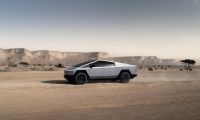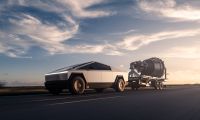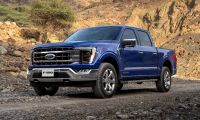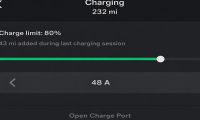The Giga Press at Giga Texas
Two things are going to be needed for the Cybertruck to ramp quickly and to reach volume production. The first is the machinery to build the Cybertruck. That machinery was spotted at Giga Texas in the form of the Giga Press.
Giga Texas has a dedicated facility for building the Cybertruck. Elon Musk made some comments about 3 years ago and said that there were so many Cybertruck reservations that they couldn't count anymore. One day, he expects Tesla to build 250,000 Cybertruck's a year. That's a lot of steel and batteries! And especially for quad-motor Cybertruck's with 500 miles of range.
The Cybertruck probably won't ramp as fast as the Model 3. It's complex. There is rear wheel steering, air suspension, a brand new interior and exterior, and an exoskeleton that has never been ramped before. There isn't going to be paint though, which will help.
This vehicle will ramp more like the Model S than the Model Y or Model 3. However, the ramp is still going to happen sooner than you think. The reason is the dedicated Giga Press, the lack of paint, and the lack of rounding on the truck.
Many people think Tesla won't be able to ramp Cybertruck and customers are going to cancel their orders. If Ford can sell 600,000 F-150 trucks each year, then why can't Tesla? If Tesla can get to 500,000 Model Y vehicles a year, how can they get to 200,000 per year in the small area of the factory dedicated just to it. Won't it take years to get there?
You may also be interested in:
- Family of four survives 250 foot fall in Tesla.
- The staggering economics of the Tesla semi.
- Ford MUST copy Tesla to succeed.
Ramping of the Cybertruck
The price of a product is dictated by demand and supply. The demand for pickup trucks is enormous in the United States. Chevy and Ford sell over 1 million trucks a year. The Cybertruck is unique and weird, but could become a best seller. It's catering toward a vehicle segment that does very well.
If Tesla is boxed in with Giga Texas and can only get to about 200,000 trucks per year, then that kind of narrows down the market for Tesla. Tesla just wouldn't have enough trucks for everyone.
There will be a lot of cost savings and convenience with having a pickup truck that you can charge at home. One interesting perspective that Tesla was wise with when designing the Cybertruck is how to simplify a vehicle to its core essentials. This will allow Tesla to ramp up the Cybertruck much cheaper than anyone else.
At first, Tesla won't produce many Cybertrucks. They could sell it for a lot of money, though I don't think they should. They should honor their original prices. The key is when Tesla gets to volume production.
Tesla will have a simplified process and a Structural Battery Pack and the Giga Casting to make the frame of the truck very easy. All processes of creating the Cybertruck are going to be done to make it easy.
Pricing is going to be the key to this. Once demand and volume production is reached for the Cybertruck, Tesla can lower prices and undercut competition - similar to how it lowered prices in China, the U.S., and around the world. There will be reused components for the Cybertruck that are already being used in other products.
The design of the Cybertruck is so simple and doesn't have any rounding. Tesla is going to have the advantage of its Supercharger network for the Cybertruck, even if other EVs are allowed access to it.
It may be some number of years away, but I expect the Cybertruck to be a very affordable and useful truck with a lot of range that will be #1 in the U.S. It will be this because of being bare bones, simplified, efficient and cheap to manufacture, and Tesla will have its own battery cells.
Do you think the Cybertruck will end up being the most profitable and cheapest pickup truck eventually?
For more information, see this video from Tailosive EV:
In Related News: Tesla Model Y to Lead European Car Market
Leave your comments below, share the article with friends and tweet it out to your followers.
Jeremy Johnson is a Tesla investor and supporter. He first invested in Tesla in 2017 after years of following Elon Musk and admiring his work ethic and intelligence. Since then, he's become a Tesla bull, covering anything about Tesla he can find, while also dabbling in other electric vehicle companies. Jeremy covers Tesla developments at Torque News. You can follow him on Twitter or LinkedIn to stay in touch and follow his Tesla news coverage on Torque News.












